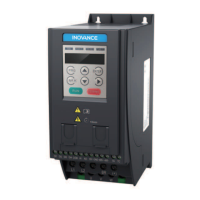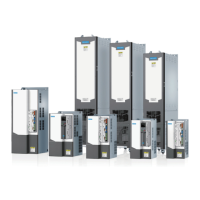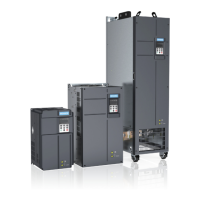Function Application
‑573‑
current. Then, the output frequency increases toward the target frequency. Therefore,
the acceleration is prolonged. If the actual acceleration time cannot meet your
requirement, increase the value of overcurrent stall action current (F3‑18)
accordingly.
Figure 3‑41 Overcurrent stall action
Table 3–24 Related parameters
Para.
No.
Function Default
Value Range Description
F3‑18
V/f overcurrent stall
action current
150% 50% to 200%
When the motor current reaches this value, the AC drive
starts the overcurrent stall function. The default value is
150%, corresponding to 1.5 times the rated current of
the AC drive.
F3‑19
V/f overcurrent stall
selection
1
0: Disabled
1: Enabled
Used to enable/disable the V/f overcurrent stall function.
F3‑20
V/f overcurrent stall
suppression gain
20 0 to 100
When the current exceeds the overcurrent stall action
current, the overcurrent stall function is enabled and the
output frequency decreases. After the current falls below
the overcurrent stall action current, the output
frequency increases to the target frequency, which
prolongs the actual acceleration automatically. A greater
value of this parameter means better suppression effect.
F3‑21
Compensation
coefficient of V/f
speed multiplying
overcurrent stall
action current
50% 50% to 200%
This parameter is used to reduce the overcurrent stall
action current during high‑speed operation. It is invalid
when set to 50%. The recommended value for F3‑18 in
the field‑weakening range is 100%.
When the frequency is high, motor drive current is small, and overcurrent stall action
current can result in greater motor speed dip compared with situations when the

